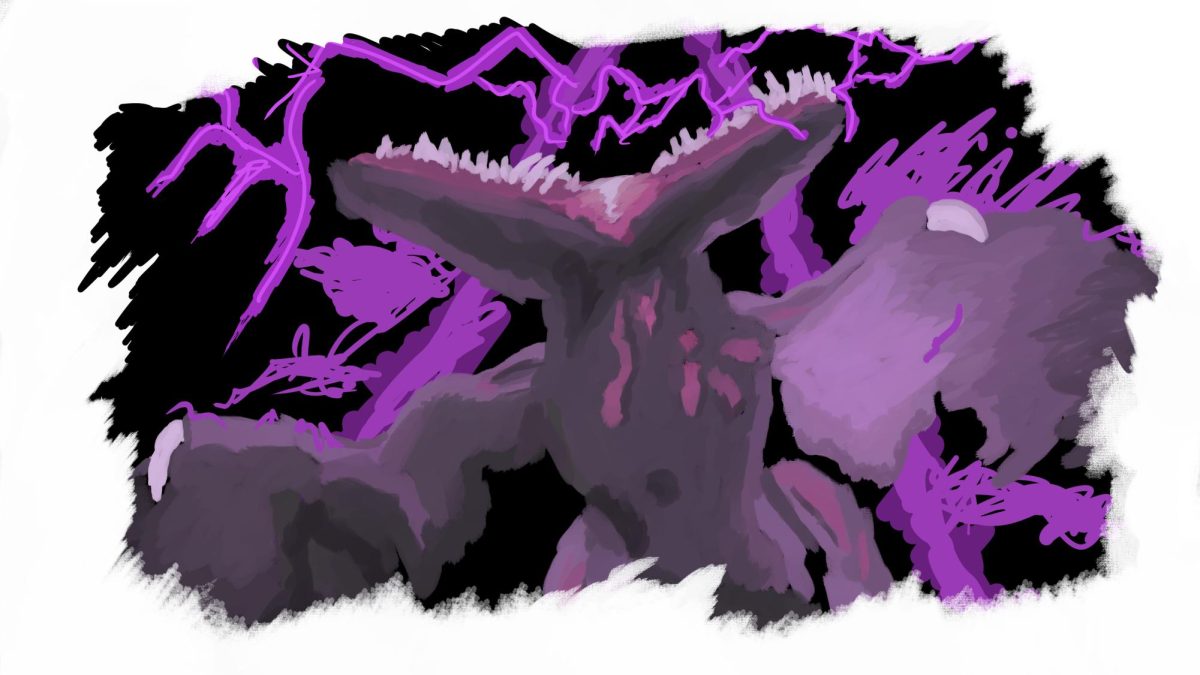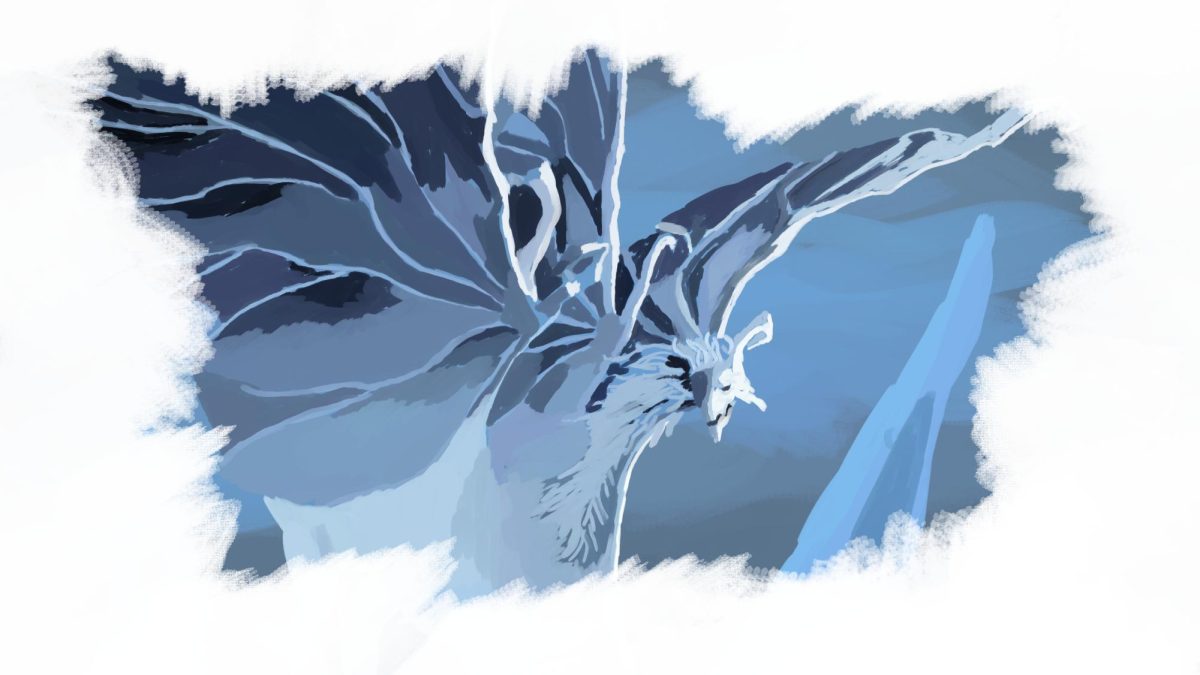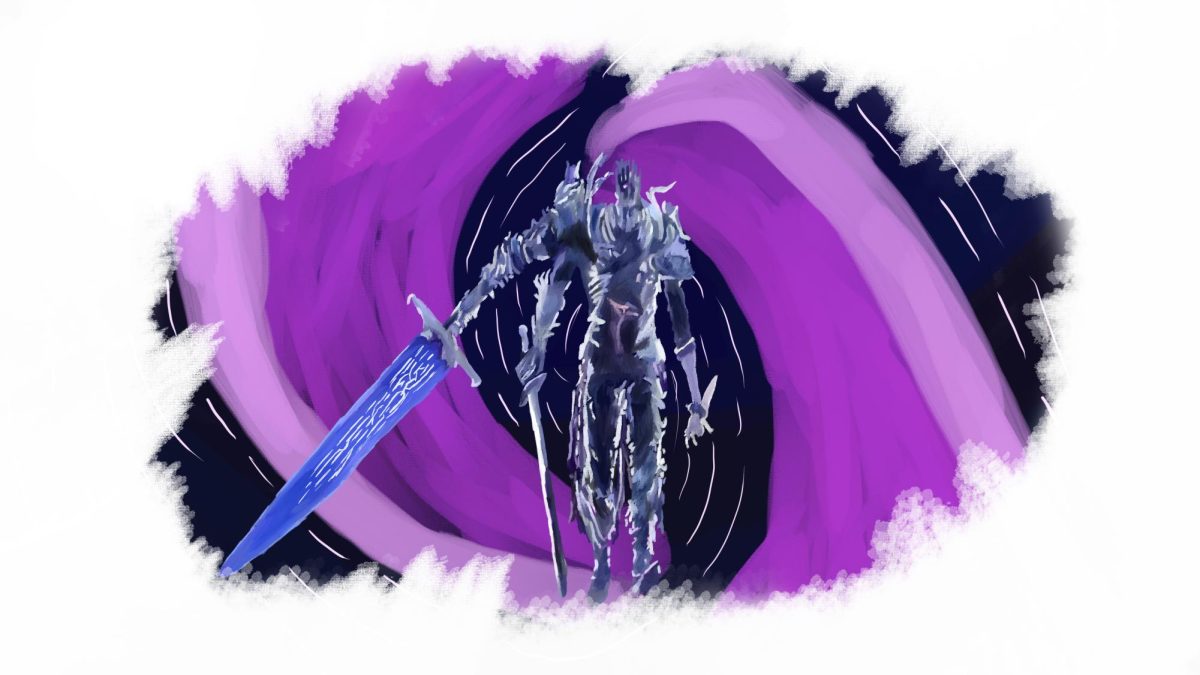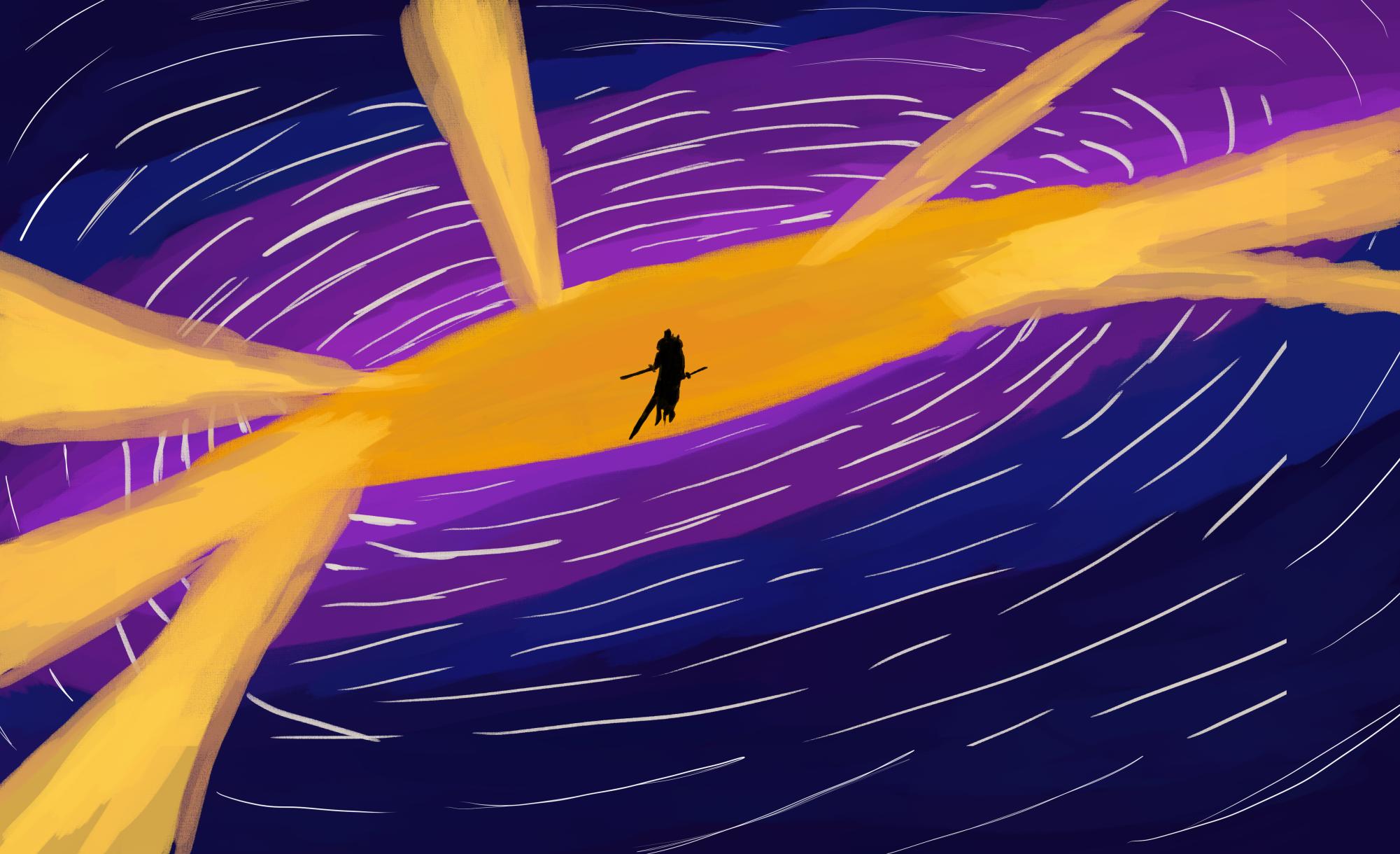In 2022, Japanese studio FromSoftware released what many would consider to be their magnum opus, Elden Ring. The open world role-playing game (RPG) took the gaming world by storm, surging to more than 30 million copies sold. Its 2024 expansion, Shadow of the Erdtree, expanded the game even further in size and scope, making it into one of the most iconic games of the decade thus far.
With the success of Elden Ring, it seemed likely that FromSoftware would continue building onto the popular base they had. Sure enough, during The Game Awards 2024, publisher Bandai Namco Entertainment announced Elden Ring Nightreign, a new co-operative multiplayer spin-off from their megahit. Now that the game has been out for three months, I think it would be a great opportunity to talk about the big game of the summer.
Elden Ring Nightreign, developed by FromSoftware and published by Bandai Namco Entertainment for Playstation & Xbox consoles and personal computers, is at its core an experimental title. With its smart reuse of assets, map elements and gameplay, Nightreign keeps the formula familiar, while expanding on it with unique areas, mechanics, bosses, characters and story.
Thus Fell Upon Us The Night
Nightreign’s story is a mix of the complex lore of previous titles, while also focusing more on characters, delivering an interesting tale on all fronts.
Elden Ring Nightreign takes place in an alternate version of Elden Ring’s world, “The Lands Between.” Set long after the events of Elden Ring, the Night has brought the world to ruin with its decaying rains.
You play as one of eight pre-made characters, a first for the Souls series. They are known as the “Nightfarers,” warriors from around the world who have come together to stop the Night’s tide, losing their memories in the process. Each of these Nightfarers has a unique story that can be explored throughout the game. You can find these by completing “Remembrance Quests,” another new narrative part of Nightreign. As each character, you can go through these quests to find out what led everyone to the Roundtable Hold, the gathering place of the Nightfarers, and who they really are.
I’m not going to spoil these quests, as most of them are quite interesting to go through and puzzle together. However, don’t expect this new system to make up for the now classic Souls standard of figuring out lore through item descriptions. As I said in my Elden Ring review, “Pixel Perfect: By the Grace of Gold,” most of the story of the world can only be found through inspecting items, which is still somewhat disappointing.
But, the intricacies of Nightreign’s story and its focus on characters still push it over the edge for me. I give Nightreign’s story nine out of 10 stars.
Make Your Choice
Nightreign evolves the Souls combat formula with new character mechanics and a faster pace.
The most recognizable characteristic of Nightreign’s combat mechanics is its pace. Where in other Souls games you would spend hours walking through large dungeons and slaying bosses, Nightreign chucks you into an ever-shrinking map with the sole goal of doing whatever it takes to get stronger. Nightreign is a fitting evolution of Elden Ring’s expanded movement options, now allowing players to “Surge Sprint,” run really fast, and mantle over walls and objects. These additions make the game flow much faster than the other Souls games by comparison.
This also helps put the introduction of preset characters on a good path. As said in the last section, you can choose between eight different Nightfarers. They are: Wylder, a Greatsword wielding knight with an explosive crossbow; Guardian, a defensive birdman that can swoop in and save the day; Ironeye, an expert archer with a knack for being constantly targeted; Duchess, a stealthy and intelligent thief; Recluse, a witch; Raider, an insanely strong warrior; Revenant, a doll that can summon aid; and Executor, a Crucible Knight that can deflect attacks like he’s playing Sekiro: Shadows Die Twice.
Each of these characters has their own affinities, like Wylder’s prowess with big swords or Ironeye’s finesse with bows. If you use the weapon that each character is best with, you’ll be rewarded with increased damage and better movesets.
Each character also has unique abilities, a passive, a Character Art and an Ultimate Art. Wylder, for example, is passively able to dodge certain hard-hitting attacks, while being able to grapple enemies and use a powerful explosive crossbow strapped to his arm.
These characters can also be improved in different ways through a new system known as “Relic Rites.” After completing runs, you are rewarded with “Murk,” the main currency of the game, and random Relics that you can equip yourself with. Each one has different effects, like giving you more health or starting your weapon off with fire damage.
The diversity of characters and upgrades you can get really helps with the game’s most core mechanic: it is meant to be played in three-person parties. If you play with friends, you can strategize and develop a team build that works for everyone. But, if you don’t have enough friends, the game matches you with two other players, or you can go solo. I’ll touch on the differences later, but for now, the game’s characters and movement are great additions to the formula.
Elden Ring Nightreign’s characters and gameplay get 10 out of 10 stars from me.
The Night’s Tide Grows Stronger
Nightreign’s quick and rewarding gameplay loop makes for an incredibly addicting dose of the best and worst of the Souls series.
Elden Ring Nightreign tries to condense its core gameplay into easy-to-handle 45-minute packages it refers to as “Expeditions.” You start them by choosing a Nightlord boss to fight, then match make. You literally drop into the land of “Limveld,” all that is left of the Lands Between of the main game. From the moment you land, Nightreign becomes a race to get as powerful as possible.
Each expedition is split into 15-minute days. You and your team have to do as much as possible in each of these days to prepare for the Night boss, a randomly selected Great Enemy that you have to face at the end of each day. To do so, you have to scour the map, taking out enemy encampments, raiding forts and castles, finding powerful weapons and felling Great Enemies and other bosses scattered across Limveld.
The speed of the gameplay loop is ultimately what makes it so fun for me. Running around with some friends, working together to take out as many bosses as possible to become overpowered is always a blast.
That core gets even better with the large, yet somehow quite rare, Shifting Earth events, where large chunks of the map are replaced with new and unique Points of Interest. They can be the Crater, a volcanic caldera with the power to reforge a weapon to Legendary, the Mountaintops, which gives you resistance to frostbite, the Rotted Woods, which gives you the ability to earn back lost health with aggression and, the best one, Noklateo, the Shrouded City, which can give you a revive during the hardest battles. Each of these Shifting Earths is quite fun to explore, with each having preset enemies, bosses, and worthwhile rewards. The only complaint I have with these is that they happen far too infrequently. Sure, you can buy them after beating an enhanced Nightlord, but it should happen more normally.
As mentioned before, the end of each day brings a Night boss. This is where it gets interesting, as the game can sometimes throw in one of six bosses from the Dark Souls trilogy, Elden Ring’s predecessor game franchise. When I first encountered the lightning-wielding, dragon-riding Nameless King, I nearly quit the game out of fear. It’s these moments that test your strength and can reward the time you put into gearing up your character each run, giving you more levels and a normally great buff going into the next day.
Nightreign’s core gameplay is incredibly fun, with the speed of exploration and combat making it an incredibly satisfying and somewhat addicting process. I give Nightreign’s gameplay 10 out of 10 stars.
It was the dead of night, and from the sky poured down a great rain
Nightreign’s Nightlord bosses are incredibly unique and fun to fight… most of the time.
If you were to ask a Souls player what their favorite part of the series is, nine times out of 10, they’re going to talk about their staple challenges, bossfights.
Nightreign knows this. At the end of Day Two, you and your team enter the last day, which is wholly taken up by the Nightlord fight. There are eight Nightlords to take on, so far, with each being some of the most interesting fights and designs of the entire Souls series. I’m going to take the opportunity to talk about a few of my favorites.
(Spoiler Warning: If you haven’t played the game, I recommend skipping this section, as it explores some of the best fights in the game).
Gaping Jaw: Adel, Baron of Night

Adel is one of those bosses that you see for the first time and just look at in terror. This lump of a dragon is known for its gaping jaw, a massive mouth with hundreds of teeth that will clamp down around you.
This dragon, as the fight goes on, goes from lumbering and powerful to the quickest enemy in the game. He starts blitzing around your screen as it uses incredibly powerful gravity magic.
The fight, both visually and audibly, oozes a sense of evil and power. The purple gravity lightning Adel employs rips through the sky, making you feel like you’re messing with something that you shouldn’t be. Its soundtrack, composed by Souls-series sophomore Soma Tanizaki, is a new staple song of the series. The deep bass choirs and ringing electric guitar, a first in the series, perfectly fit this monstrosity of a boss.
Adel was the first of the bosses to get an enhanced version, known as an Everdark Sovereign. This version I have personal problems with. As the fight reaches its halfway point, Adel becomes so fast he rivals Malenia, Blade of Miquella from Elden Ring. He summons a large tornado of dirt and gravity lightning, forcing you into an uncomfortable position, which he uses to slam you into the ground with brute force. It’s just really hard.
But regardless of how I feel about his Everdark Sovereign variant, Adel is still a really interesting and fun boss to learn.
Fissure in the Fog: Caligo, Miasma of Night

Caligo is one of the most cinematic bosses FromSoftware has ever made. This slender ice dragon is just absolutely incredible to fight, from its fog-covered reveal to its phase-transition ice attacks. She’s one of those bosses that make you feel bad for taking them down, but that’s incredible.
As a dragon, Caligo uses her set of four wings to maneuver quickly around the map, breaking up the flow of combat to nail your team with ice magic. FromSoftware continues to one-up themselves with their head-locked dragon fights, making this one slower but more powerful in the long run.
Her second phase attack where she flies close to the ground, collecting rocks and ice to shoot at you, is equally majestic and terrifying. Overall, Caligo is one of the best bosses I’ve ever faced. Her soundtrack, composed by Soma Tanizaki, is also one of the best ever written. I’d strongly recommend facing off against this demon of a boss.
Night Aspect: Heolstor the Nightlord

Heolstor is Nightreign’s final boss. In order to even challenge him, you have to first defeat four of the Nightlords, thereby proving your capability to even come close to fighting this beast.
The fight starts off against a weakened Shape of Night, bound in rags with swords locked up. As you whittle his health down, he pulls out the FromSoftware staple weapon, the Moonlight Greatsword. As you reach the end of his health bar, he falls to the ground and begins to emit darkness.
As it settles, you come face to face with the true herald of Night, Heolstor the Nightlord. He can now use night-infused magic and a powered up Moonlight Greatsword to take you out. The fight flows incredibly well, reaching a flow state of perfect dodging and attacking that few bosses ever achieve. Then halfway through, he rises to the sky and cuts through the Night in what is one of the coolest things I’ve ever experienced in a game, harnessing the power of one of the other Nightlords.
Overall, Heolstor is genuinely one of the best final bosses FromSoftware has ever made. His design, the music and the atmosphere all showcase the studio firing on all cylinders. His theme, composed by the game’s lead composer, Shoi Miyazawa, is also staggeringly beautiful, bringing a grandeur to the darkness before incorporating the game’s main theme, a telltale sign of a boss’ greatness.
In the end, the Nightlord fights are some of the most fun and interesting ever put to screen, testing your ability to counter different defenses and enemy types.
I give Nightreign’s Nightlords an easy 10 out of 10 stars.
A Ravening Unending
Nightreign’s strengths are also held down by some pretty baffling weaknesses, taking the game down a notch.
I’ve been mostly positive about Nightreign, highlighting its best aspects, because that’s all I really want to talk about. That’s what the game does best. But I can’t overlook the problems that the game has, which can definitely hamper the experience.
Nightreign’s multiplayer design is not the best. In 2025, where almost all multiplayer games available on different platforms let their users play together, Nightreign locks you into system-specific lobbies. This means that if you play on Xbox and your friend plays on PlayStation, you can’t play together, which forces you to use the spotty random matchmaking system, which can leave you waiting for actual hours to get into a game. I would know, it’s happened to me multiple times.
The game is definitely designed for trio play, but it gives you the option to play alone or in a duo. While it does give you unique items that can let you revive multiple times if you go down during a boss, the scaling is still just a bit wacky when compared to multiplayer, putting you at a disadvantage every time you want to play alone.
As Night Falls, We Rise
Nightreign, despite problems with its multiplayer and solo play, still excels at creating a rewarding and fast-paced experience.
Despite the game’s problems, Elden Ring Nightreign is still an incredibly fun game. The game currently holds a 77 out of 100 on Metacritic, showing that most people can definitely overlook some of the flaws the game has. I’m hoping that the downloadable content (DLC) coming out later this year will be able to rectify these problems, which is definitely a possibility. Also, FromSoftware has continued to provide updates and fixes to the game well after we thought they’d stop, with them currently adding in the Everdark Sovereign bosses to give us an even harder challenge.
I would say that if you’re interested in playing Nightreign, you should play through Elden Ring first. The game doesn’t hold your hand if you’re a beginner. Where other games would have a consistently increasing difficulty curve, this one just throws you into the fray. If you have friends who’ve already played Elden Ring, then I’d say this is an incredibly worthwhile purchase.
Overall, with its stellar gameplay, boss design and presentation, Elden Ring Nightreign is able to surge past its problems and become an incredibly fun and replayable game. I give Elden Ring Nightreign nine out of 10 stars.




![Lesbian Visibility Day is April 26, and it’s a holiday to celebrate the lesbian community of the world. Lesbian Visibility day was established in 2008 by many queer activists and organizations who sought to raise more awareness for lesbian history and culture. “So this is why during Lesbian Visibility [Day] we celebrate and center all lesbians, both cis and trans, while also showing solidarity with all LGBTQ+ women and nonbinary people,” Linda Reily, in an article written by her, said.](https://rockmediaonline.org/wp-content/uploads/2025/04/Lesbian-Visibility-day.jpeg)



